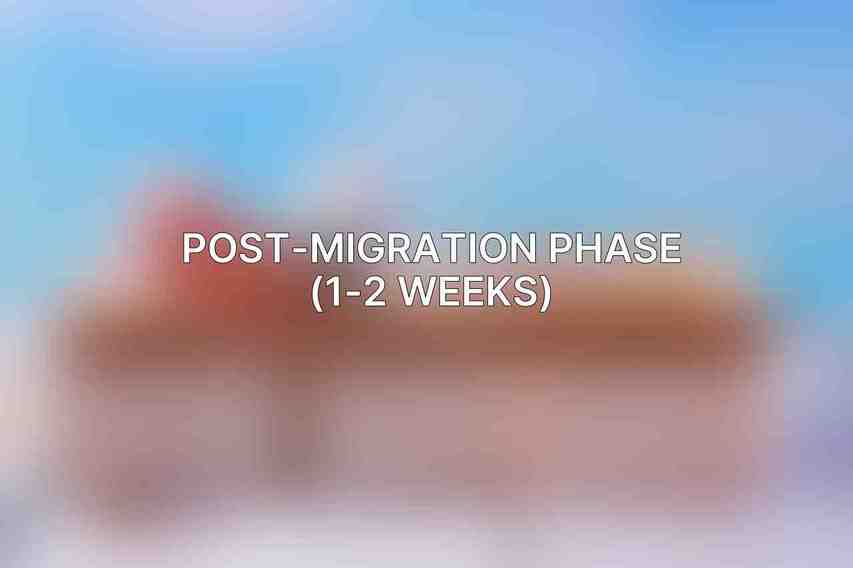Businesses are continually striving to enhance their online presence. one critical aspect of this evolution is website migration, which involves moving a website from one platform to another. Proper planning and execution are crucial to ensure a seamless transition and minimize disruptions to the user experience. This article delves into the comprehensive timeline planning necessary for effective website migration.
Planning Phase (2-4 weeks)
A. Define Scope and Goals:
When embarking on a website migration project, it is essential to determine website migration objectives and desired outcomes. This involves identifying the specific reasons for the migration, whether it’s to improve performance, enhance user experience, or adopt new technologies. Additionally, businesses need to identify critical content and functionality that must be migrated to maintain the website’s core essence and functionality post-migration.
B. Stakeholder Involvement:
Engaging key stakeholders from various departments is vital for the success of a website migration project. Involving stakeholders such as IT, marketing, and development teams ensures that all aspects of the migration are considered comprehensively. Establishing clear communication channels and roles helps in streamlining decision-making processes and ensures everyone is aligned towards the common goal of a successful migration.
C. Technical Assessment:
A thorough review of the existing website architecture and technologies is imperative during the planning phase. This assessment helps in identifying potential challenges and dependencies that may arise during the migration process. By understanding the technical world, businesses can better prepare for any hurdles and devise effective solutions to mitigate risks.
D. Content Audit:
Conducting a comprehensive inventory and evaluation of existing website content is crucial in determining the content that needs to be migrated, updated, or deleted. This step ensures that only relevant and valuable content is transferred to the new platform, contributing to a more efficient and organized website post-migration.
Preparation Phase (2-4 weeks)
A. Establish Development Environment:
Setting up a test environment for website development and testing is paramount to ensure that the migration process does not disrupt the live website. This environment allows developers to test changes and updates without affecting the current site’s functionality. Additionally, configuring hosting and infrastructure for the new website in advance streamlines the migration process.
B. Content Migration:
Developing a comprehensive content migration plan and assigning responsibilities to specific team members helps in ensuring a smooth transfer of content. Migrating necessary content to the development environment and updating or recreating content as required are essential steps to maintain content relevance and quality post-migration.
C. Functional Testing:
Thoroughly testing the functionality of migrated content and features is crucial to identify any issues or bugs before the website goes live. It is essential to verify the compatibility of the migrated content with existing systems and integrations to ensure a seamless user experience across all aspects of the website.
D. Performance Optimization:
Optimizing the website for speed, responsiveness, and user experience is key to maintaining a competitive online presence. Conducting performance tests during the preparation phase helps in identifying any areas that require optimization and ensures that the website performs optimally post-migration.
Migration Phase (1-2 days)

A. Website Cutoff and Backup:
Establishing a clear website cutoff time for migration is crucial to minimize downtime and disruptions to website visitors. Creating a full backup of the existing website is a critical step to safeguard valuable data and content in case of any unforeseen issues during the migration process.
B. Content and Database Transfer:
Migrating all necessary content and databases to the new platform requires meticulous planning and execution. Confirming the successful data transfer by verifying accuracy and completeness is essential to ensure that all critical data is preserved and accessible on the new website.
C. Website Go-Live:
Deploying the new website to the live environment marks a significant milestone in the migration process. Testing website functionality rigorously and ensuring a seamless transition from the old website to the new one is crucial to maintain user confidence and satisfaction.
Post-Migration Phase (1-2 weeks)

A. Monitoring and Maintenance:
Monitoring the website’s performance and traffic patterns post-migration is essential to identify any issues that may arise after the migration. Addressing these post-migration issues promptly helps in maintaining a seamless user experience and ensuring that the website continues to operate optimally.
B. SEO Optimization:
Updating SEO settings and redirecting URLs post-migration is vital to maintain search engine visibility and rankings. Monitoring website ranking and organic traffic helps businesses track the impact of the migration on their online presence and make necessary adjustments for improved visibility.
C. Content Review and Update:
Reviewing migrated content for accuracy and relevance allows businesses to ensure that the website maintains its quality and relevance post-migration. Updating content as necessary to maintain engagement with visitors and reflect any changes in the business is crucial for sustained online success.
effective website migration requires meticulous planning, thorough preparation, seamless execution, and diligent post-migration monitoring. By following a structured timeline and adhering to best practices, businesses can navigate the intricacies of website migration successfully, ensuring a smooth transition and continued online success in the dynamic digital world of 2024.
Frequently Asked Questions
1. What is website migration?
Website migration is the process of transferring a website from one web host or server to another. It can also involve moving the website to a new domain name or URL structure. Find more on Essential SEO Strategies for Website Migration Success
2. Why is timeline planning important for website migration?
Timeline planning is crucial for website migration to ensure a smooth transition without any downtime or loss of traffic. It helps in coordinating tasks, setting deadlines, and minimizing potential issues that may arise during the process.
3. How can I create a timeline for website migration?
To create a timeline for website migration, start by outlining all the necessary tasks involved in the process such as content transfer, domain setup, testing, and launch dates. Assign deadlines for each task and create a detailed schedule to track progress.
4. What are some common challenges faced during website migration?
Common challenges during website migration include broken links, missing files, lost data, decreased search engine rankings, and server downtime. Proper planning and testing can help mitigate these challenges.
5. How can I ensure a successful website migration within the planned timeline?
To ensure a successful website migration within the planned timeline, it is essential to conduct thorough testing before the launch, keep communication channels open with all stakeholders, and have a backup plan in case of any unexpected issues. Regular checkpoints and progress tracking can help stay on schedule. Explore further with Comprehensive Guide to Post-Migration Testing for Websites Read more about this on How to Choose the Right Website Migration Service Provider

